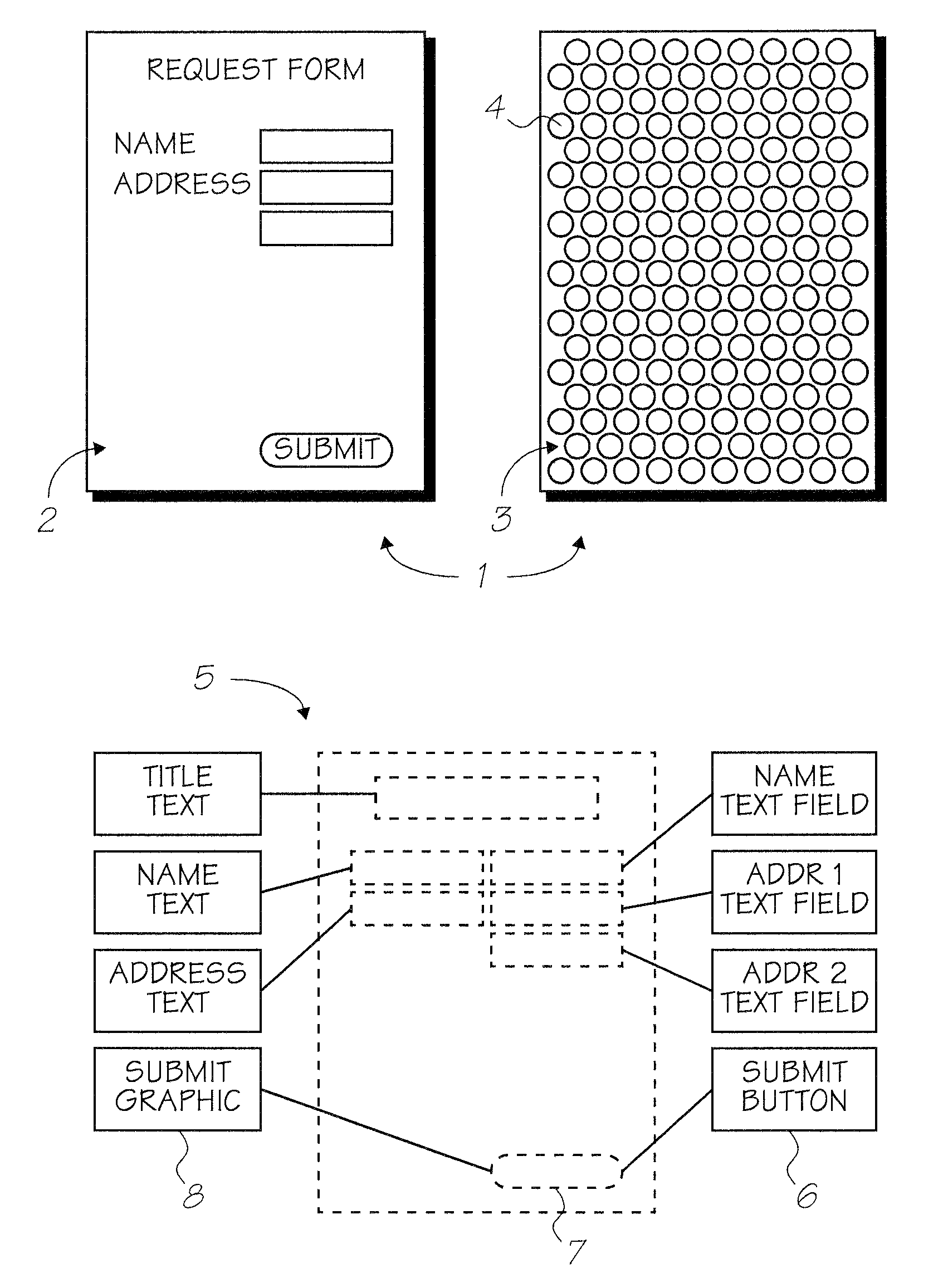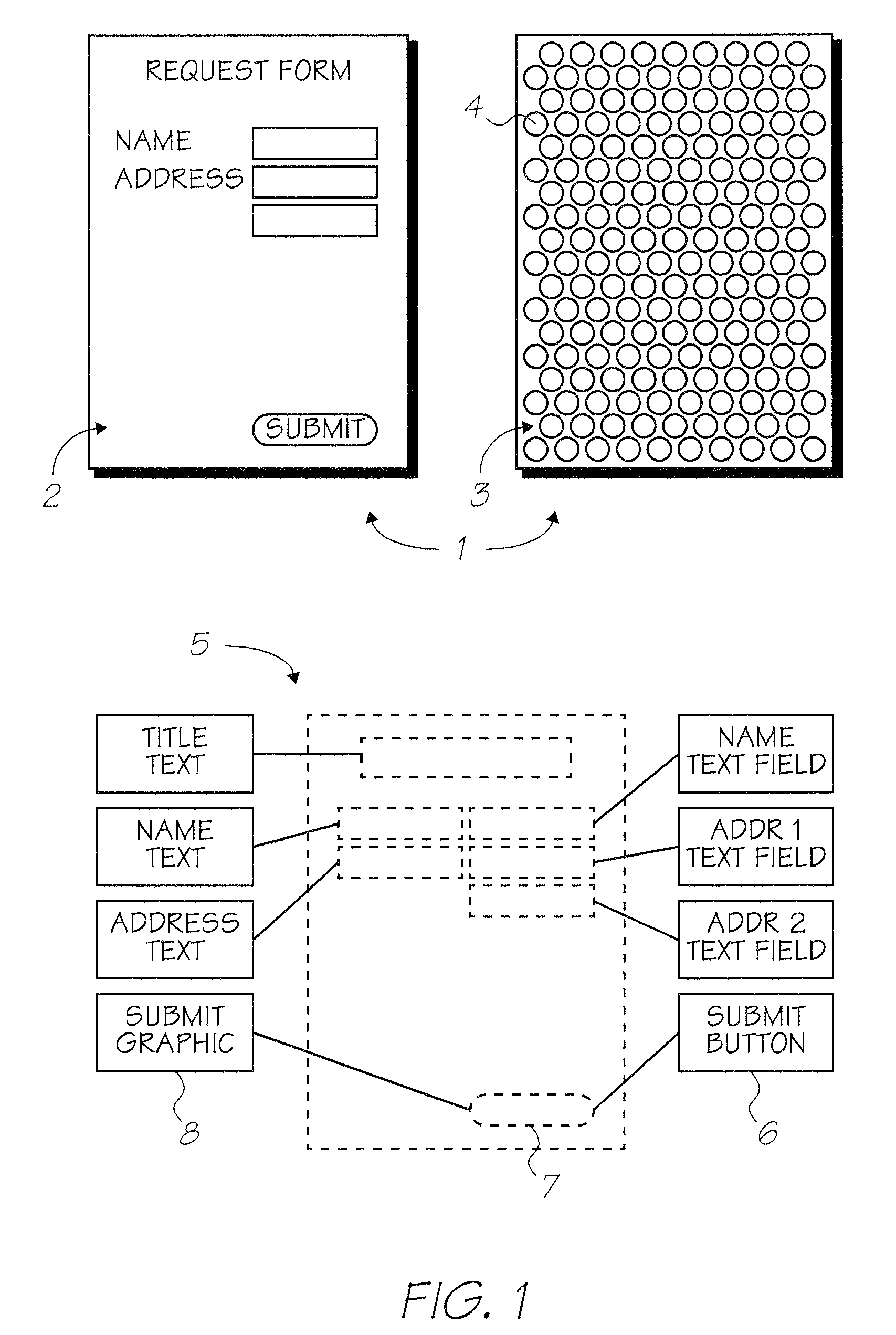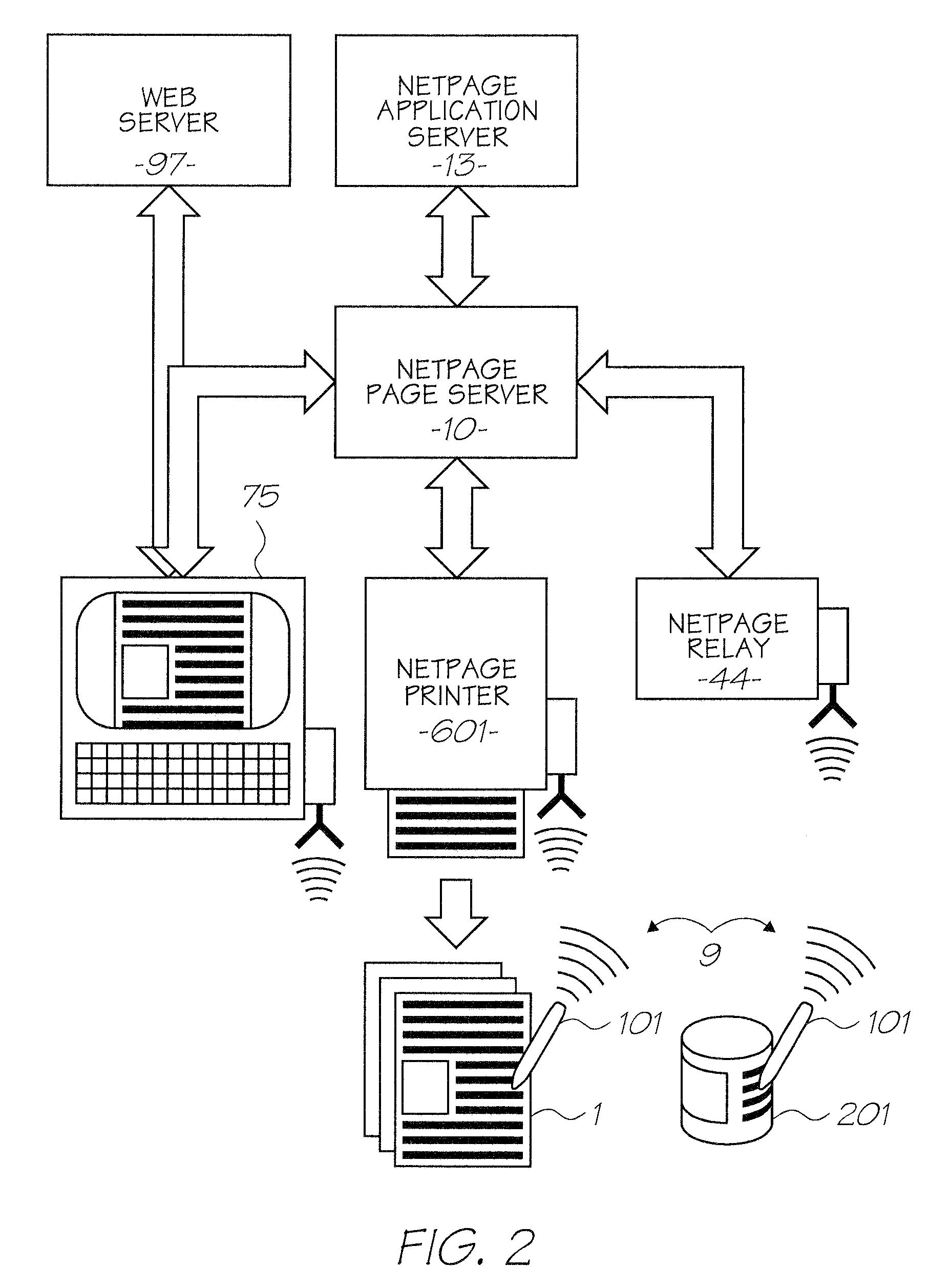Alternative phthalocyanine dyes suitable for use in offset inks
a technology of offset inks and dyes, applied in applications, instruments, transportation and packaging, etc., can solve the problems of unsuitable netpage and hyperla, prior art oil-based inks are highly colored, and label damage no longer prevents scanning
- Summary
- Abstract
- Description
- Claims
- Application Information
AI Technical Summary
Benefits of technology
Problems solved by technology
Method used
Image
Examples
example 1
[0375]
[0376]To a solution of hydroxygallium(III) naphthalocyaninetetrasulfonic acid 4 (10.2 g, 9.11 mmol) in methanol (250 mL) was added a solution of Aliquat® 336 (14.5 g, 0.036 mol) in methanol (50 mL). The solution was concentrated to half volume. The concentrated solution was diluted with water (200 mL) to precipitate the product which was filtered off and washed with warm acetone / water (50:50, 2×300 mL) and warm water (2×300 mL), and air dried. The solid was then washed with boiling acetone / hexane (1:9, 2×300 mL) and dried to give the predominant product 5 as a dark green powder (12.9 g, 56%).
[0377]1H NMR (d6-DMSO): δ 0.87 (36H, m); 1.25 (120H, m); 1.60 (24H, m); 2.96 (12H, s); 3.20 (24H, m); 7.9-11.1 (20H, m).
[0378]Aliquat® 336 is a mixture of trioctylmethyl- and tridecylmethyl-ammonium salts. Example 1 was repeatable using isomerically pure trioctylmethylammonium bromide.
example 2
[0379]
Method A
[0380]A mixture of hydroxygallium(III) naphthalocyaninetetrasulfonic acid 4 (849 mg, 0.758 mmol) and didodecyldimethylammonium bromide (1.61 g, 3.49 mmol) in water (100 mL) was stirred for 5 min. The reaction mixture was diluted with water (100 mL) and extracted with chloroform / methanol (50:50, 2×200 mL). The combined organic layers were evaporated and the residue was suspended in warm water (200 mL), filtered, and washed with warm water and cold water / acetone (50:50) and dried to give the product 6 as a dark-green powder (777 mg, 39%).
Method B
[0381]A mixture of tetrakis(tributylammonium) hydroxygallium(III) naphthalocyaninetetrasulfonate (5.74 g, 3.08 mmol) and didodecyldimethylammonium bromide (5.71 g, 0.012 mol) in methanol (200 mL) was evaporated to half volume with heating under a stream of nitrogen and diluted with water (100 mL). The solid was filtered off and washed with hot water (3×250 mL) and hot acetone / water (50:50, 3×250 mL) and allowed to dry. The solid ...
example 3
[0384]
[0385]A mixture of hydroxygallium(III) naphthalocyaninetetrasulfonic acid (2.15 g, 1.92 mmol) and cetylpyridinium chloride (4.22 g, 0.012 mol) in water (20 mL) and methanol (100 mL) was evaporated to dryness with heating and stirring under a stream of nitrogen. The solid was suspended in acetone (200 mL), and filtered off. It was washed with water (2×200 mL), acetone (2×200 mL) and cold methanol (1×200 mL), and dried to give the product as a dark-green powder (3.09 g, 67%).
[0386]1H NMR (d6-DMSO) δ 0.85 (12H, t, J=6.6 Hz); 1.20 (104H, m); 1.89 (8H, m); 4.58 (8H, t, J=7.5 Hz); 7.9-11.1 (40H, m).
[0387]UV-Vis-NIR (DMSO): λmax 791, 705, 342 nm.
PUM
| Property | Measurement | Unit |
|---|---|---|
| emission wavelengths | aaaaa | aaaaa |
| emission wavelengths | aaaaa | aaaaa |
| emission wavelengths | aaaaa | aaaaa |
Abstract
Description
Claims
Application Information
 Login to View More
Login to View More - R&D
- Intellectual Property
- Life Sciences
- Materials
- Tech Scout
- Unparalleled Data Quality
- Higher Quality Content
- 60% Fewer Hallucinations
Browse by: Latest US Patents, China's latest patents, Technical Efficacy Thesaurus, Application Domain, Technology Topic, Popular Technical Reports.
© 2025 PatSnap. All rights reserved.Legal|Privacy policy|Modern Slavery Act Transparency Statement|Sitemap|About US| Contact US: help@patsnap.com



